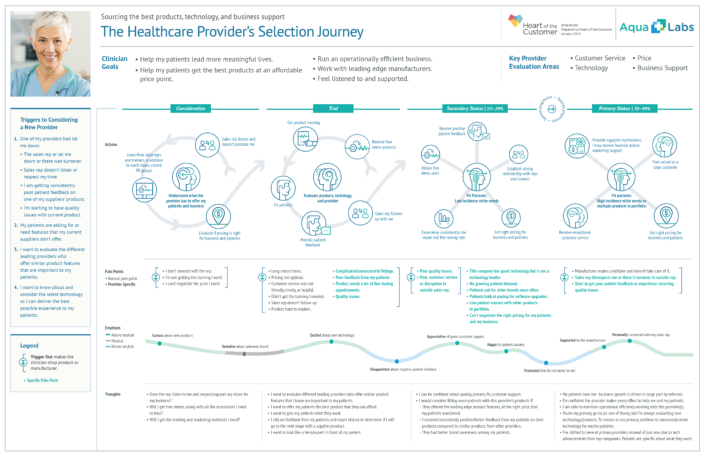Editor’s Note: As we get ready for our book launch in May, we’re previewing the major topics. You can read more about our book at www.HowHardIsIttoBeYourCustomer.com.
What differentiates a mapping program that drives action from one that doesn’t? A major factor is the reason for doing journey mapping in the first place.
We can confidently predict whether a mapping program will be successful in our very first conversation. Does the company have a solid reason they want to do mapping? Or is it because they heard it’s a good thing to do?

Our most successful clients often require two to four meetings to form a tight business problem before we even get to a proposal. This is time well-spent. Before you commit the time and money to do journey mapping, engage your business partners to establish the right path.
To construct your customer journey mapping approach, it’s important to answer the five key, journey mapping questions.
In this post I’ll walk through the first question. Next week, co-author Nicole Newton will discuss selecting the right journey, and we’ll alternate from there.
A well-thought-out business problem guides you through the rest of the questions, illuminating where the journey begins and ends. Unfortunately, selecting the right business problem involves trade-offs. If your focus is on the top of the funnel, you won’t get much guidance on call center issues.
There are three common categories of business problems: Something is broken, you have an existing initiative, or there is new CX leadership.
Something is broken. This is the most common reason for journey mapping. Something is causing problems for customers, and journey mapping helps determine what that is, and how it can be solved.
There are as many ways to determine what is broken as there are journeys. Customer surveys (especially when accompanied by driver analysis) show the top reasons for attrition. Calls to the contact center have increased around a certain area and you need to understand the root cause. You’ve seen attrition in a certain customer category. Sales are dropping. The list is endless. Any of these are a good candidate for journey mapping. Our work with ABC Company (not their real name) and the YMCA of the Greater Twin Cities were both examples of focusing on something that was broken in their experience.
This category leads to a relatively narrow map because you have to focus your efforts on this one area. It also leads directly to ROI, since you know the area that needs to be fixed. One tradeoff is that this often doesn’t work well for building customer personas or rallying the organization around a truer sense of customer needs since the mapping effort is focused on just a small part of the journey.
You have an existing initiative. We have one client who has hired us three times, every time in this one category. Once a project is approved, a journey map is a good way to help guide your approach. We often get called when a company is rethinking their digital strategy – mapping how customers use digital tools today (including with competitors) can guide your teams as they build your next digital iteration.
As with when something is broken, this is often a narrower map. If you are building a new communications program, you won’t learn much about sales. But your communications department will get effective guidance.
You have new CX leadership. New leadership lends itself to a different approach. Leaders may want to understand the broad journey, in order to lead efforts in the most effective way. Maps in this category tend to focus on a broad, end-to-end journey.
The benefits of this approach is that it gives a clear vision of the overall journey and where the highs and lows are, guiding future focus. In his recent report, “Is Customer Experience a Missed Opportunity?”, CustomerThink CEO Bob Thompson identified that the most successful customer experience programs started with a broad, end-to-end journey map, then did future maps to address the issues identified.
As Nicole will discuss next week, however, end-to-end maps are very good at identifying the highs and lows of the overall experience, engaging teams, and building personas, but their higher-level focus makes it less likely to drive short-term ROI, as there is not enough detail about each individual step along the way.
—————
The biggest problem we hear is when organizations say, “Wow. Those all seem really good.” Yes, they do. (Hey, I created the categories. So I like it when people agree with them!) But success requires selecting which one to focus your initiative on. Trying to accomplish all three will leave you with a watered-down map that doesn’t solve any of the problems – but that does waste precious resources.



